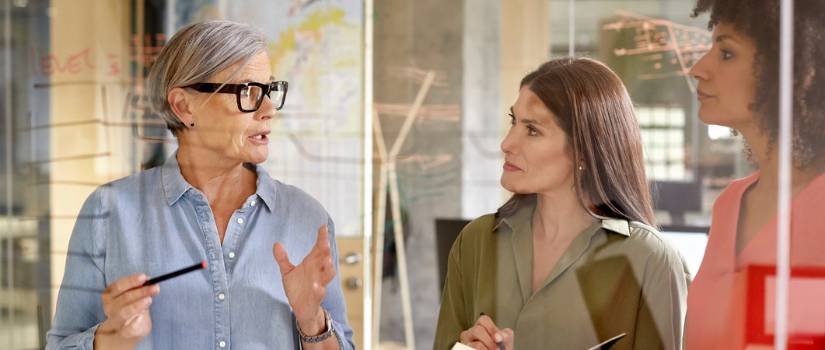Did you know that only 8% of organizations include age in their DEI strategy? Both ageism, and its opposite, adultism are prevalent in the workplace. There are five different generations in the workplace today! This presents challenges that need to be addressed within a DEI strategy, because people of all ages in one workplace mean a lot of different people, with different ideas, different histories, different ways of viewing the world, and different assumptions. There are so many ways to negotiate these various differences, which can lead to misunderstandings and miscommunications. However, there are a few key ways that ageism and adultism show up in the workplace.
While an intergenerational workplace can be a huge asset for a team, this power has to be consciously harnessed. What happens all too often instead is that real or perceived generational differences put a wedge between collaboration, innovation, and cultivating an inclusive culture. Imagine moving beyond a goal of simply bringing multiple generations together, instead encouraging teams, leaders, and organizations to confront their internalized ageism and adultism by tackling them directly.
Generational conflict is the result of the lack of understanding and willingness to confront, interrogate, or challenge individual bias. We at SGO believe in embracing a growth mindset and challenging ourselves to confront these biases in the ever-evolving workplace. Let’s look at how our individual unconscious assumptions, thoughts, beliefs, behaviors, and attitudes about different generations show up through language and word choice.
Here are some examples of common ageist microaggressions:
- Dismissive statements such as, “You’re still young,” or “You have time!” from older colleagues. The assumption that people actually have “time” can be harmful. Age is not the only factor that impacts young people wanting to do all of the things. Other systems are at play in a capitalistic culture that demands constant grind and hustle, because many people, young people included, are individually burdened with structural racism and/or poverty that impacts their social and financial situations.
- Comments like, “You look so good for your age,” or “I would’ve never guessed you were (insert age over 40).” The implication here is that being older is negative. There is an additional layer here that attractiveness can only be equated with youth and an implication that only young people are attractive.
- Using offensive terms to refer to the older generation, such as grumpy or geriatric. Grumpy is often associated with aging, with the implication that being lackluster, sad, and/or having an unpleasant attitude is associated with being older. While geriatric is a term that is used in medical facilities to reference older adults, this term can also be used as a slur that invalidates people who are actually older and/or have a health complication.
Adultism microaggressions show up in the following ways:
- Any language that assumes young people don’t know what they’re doing and don’t have enough experience. The implication here is that wisdom, expertise, or intelligence is exclusively associated with being older. History has provided many examples showing that young people are fully capable: The Reverend Dr. Martin Luther King, Jr.; the Honorable John Lewis; Greta Thunberg; Malala Yousafzai; Sacagawea; and so many others.
- Giving office housework to younger folks, especially interns. In this case, the implication is that young people can’t do “real work.”
So what can you do to challenge ageism and adultism in the workplace?
- Reflect on and name assumptions about colleagues who are different age ranges and who belong to different generations than yours. Then we all have to adjust our lens to overcome those unconscious (or conscious) biases.
- Take advantage of differences and use them as a guide. Different people possess different expertise. Embrace these differences to learn about each other.
- Challenge your own assumptions, listen to others, and understand the impact as well as the intent of your words and actions. Commit to a new learning goal about how stereotypes can impact your understanding of others.
Are you ready to find out more about bringing our impactful workshops and facilitators to your workplace? Learn more about our workshops and how we can help your team. To see more videos about DEI in the workplace, follow us on YouTube!
